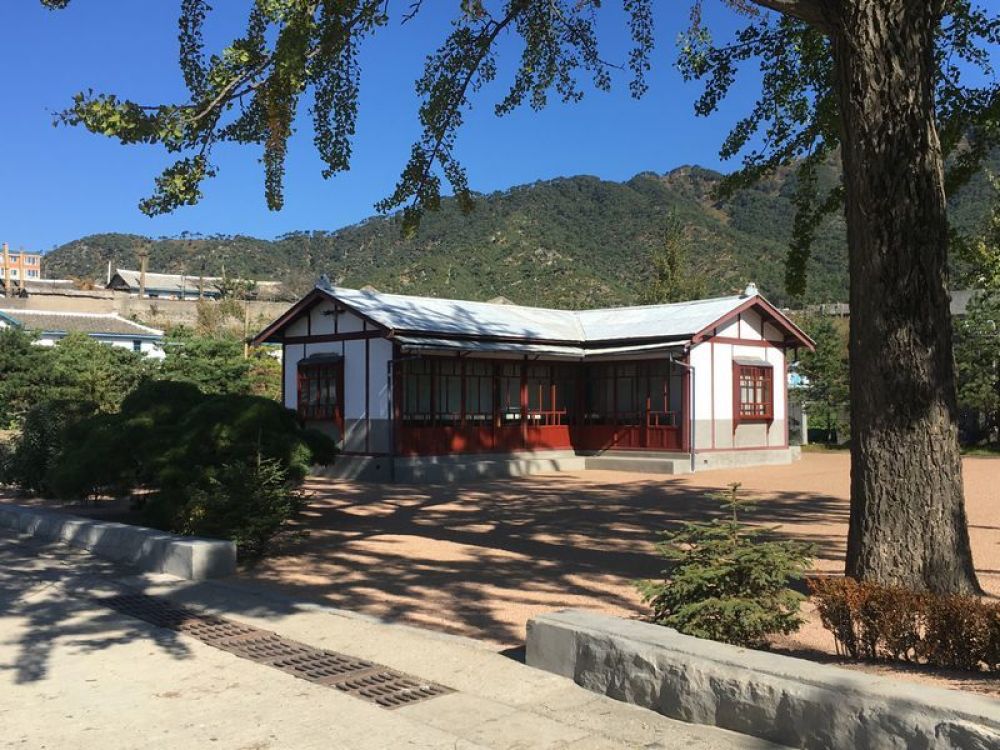Sonbong Revolutionary Site Food History
The Sonbong area, within Rason, North Korea, has a storied history closely entwined with the revolutionary tales of the country. While the Sonbong Revolutionary Site is celebrated mainly for its historical significance related to the anti-Japanese revolutionary struggle, the local food culture has also been influenced by the region’s past. Traditional Korean dishes, adapted to the local ingredients and climate, define the region's culinary heritage. Historically, North Korean cuisine has been influenced by the rugged terrain and the four distinct seasons, which results in a variety of preservation techniques, like pickling and fermenting, essential for harsh winters.
Must-Try Top 10 Food Dishes in Sonbong Revolutionary Site, Rason, North Korea
When visiting the Sonbong area in Rason, tourists can enjoy a taste of the following traditional Korean dishes:
- Kimchi (Non-Veg/Veg): A staple in Korean cuisine, this iconic dish made of fermented vegetables, most commonly napa cabbage and Korean radishes, is seasoned with various spices including chili powder, scallions, garlic, ginger, and jeotgal, a type of seafood.
- Bibimbap (Non-Veg/Veg): A mixed rice dish with vegetables, and optionally meat, topped with a fried egg. The dish can be made vegetarian by omitting the meat.
- Pajeon (Veg): A savory pancake filled with scallions and other ingredients. Although often enjoyed with seafood or pork, it can be made purely with vegetables.
- Japchae (Veg): A noodle dish made from sweet potato noodles (dangmyeon), stir-fried with vegetables, and sometimes meat, though it can be enjoyed as a vegetarian dish.
- Naengmyeon (Non-Veg): A cold noodle dish with a tangy iced broth, usually including buckwheat noodles and slices of meat.
- Sundubu-jjigae (Non-Veg): A hot and spicy stew made with uncurdled tofu, vegetables, sometimes meat or seafood, and gochujang or gochugaru.
- Mandu (Non-Veg/Veg): Korean dumplings filled with minced meat, tofu, green onions, and seasonings, but they can also be prepared with a completely vegetarian filling.
- Hoeddeok (Veg): A sweet syrupy pancake filled with brown sugar, honey, chopped peanuts, and cinnamon, is a popular street food treat.
- Tteokbokki (Veg): Spicy stir-fried rice cakes, which is a popular street food. It can be prepared with or without fish cake.
- Korean BBQ (Non-Veg): Although commonly featuring meat, there are BBQ options for diners preferring to avoid beef such as pork or chicken, grilled at the table served with an array of side dishes known as banchan.
Top Famous Restaurants in Sonbong Revolutionary Site, Rason, North Korea
While specific restaurant information in the Sonbong area may be limited due to the secretive nature of North Korea, Rason in general offers a variety of dining experiences featuring local cuisine. Below are some generic types of dining venues you might encounter in the area:
- Traditional Korean Restaurants: Offering an array of conventional dishes, these restaurants allow tourists to taste the true flavors of North Korean cuisine.
- Local Noodle Shops: Serving various regional noodle dishes, including the cold buckwheat noodles, naengmyeon, a Rason specialty.
- Street Food Vendors: Easy to find local delicacies like hoeddeok, tteokbokki, and mandu which offer mostly vegetarian options.
Finding the specific addresses and names of restaurants can be challenging due to the limited access to information from North Korea. When visiting Rason, it's advisable to seek guidance from an official tour operator or local guide, who will also know the most currently popular and available dining establishments.

